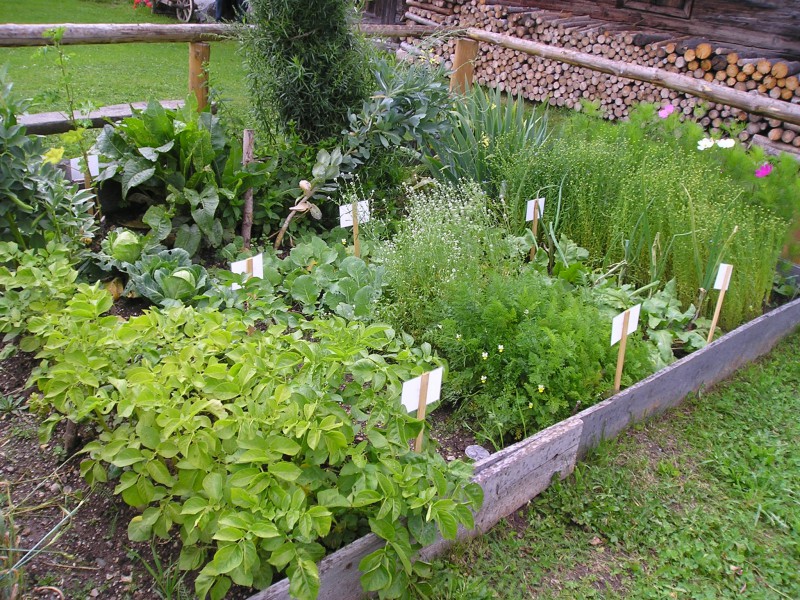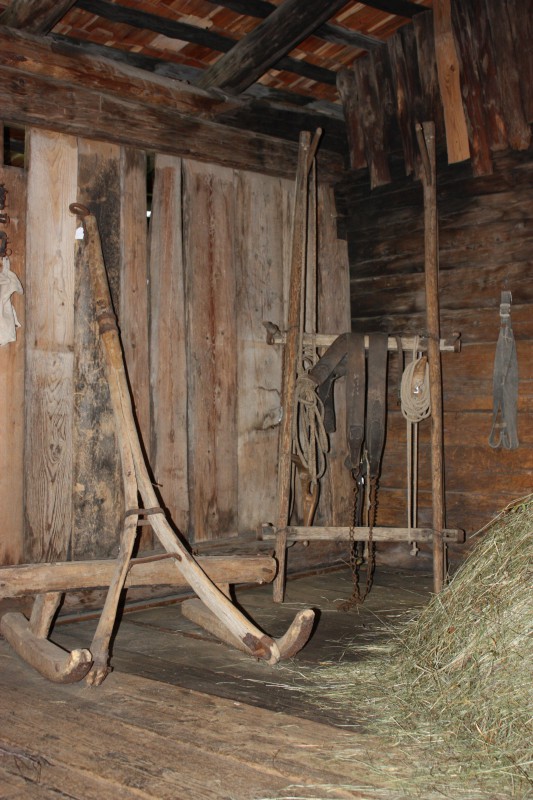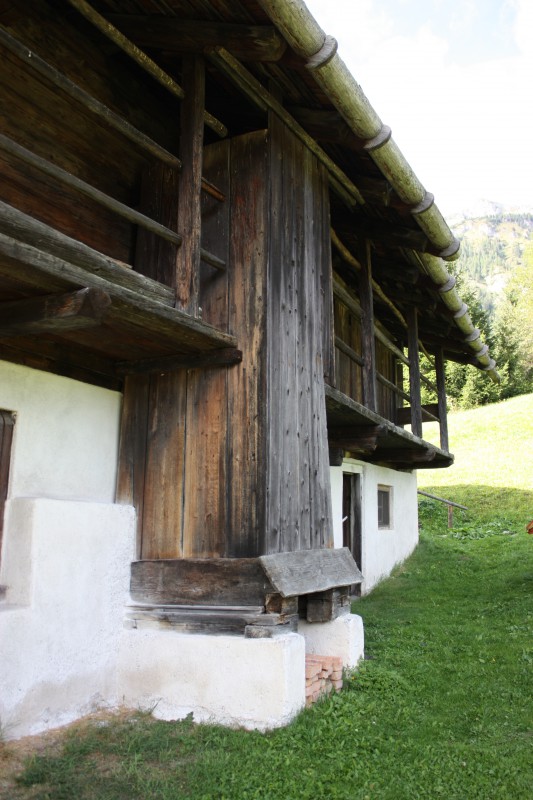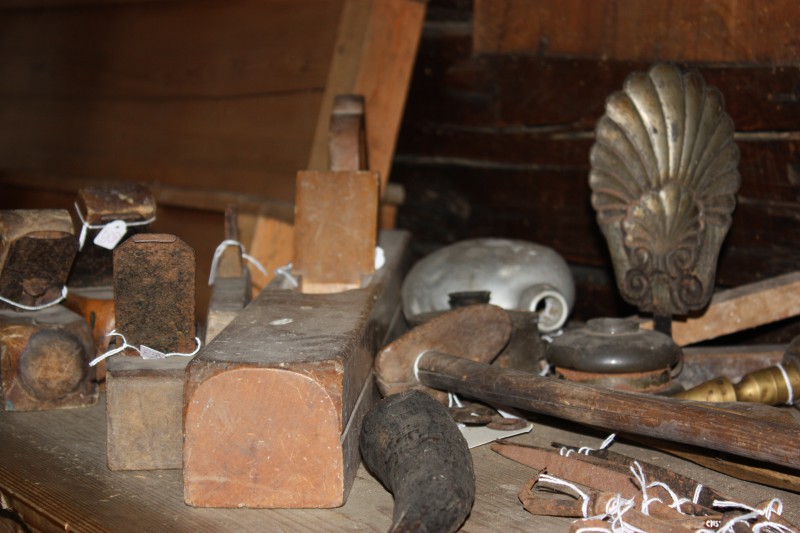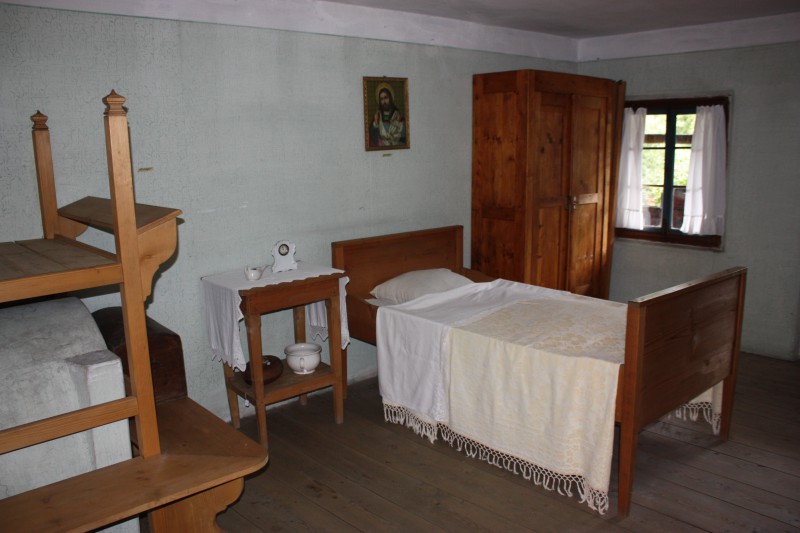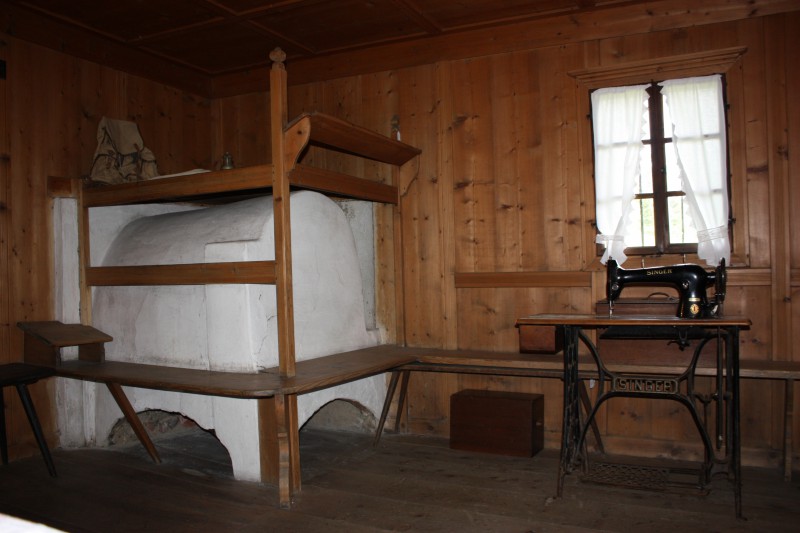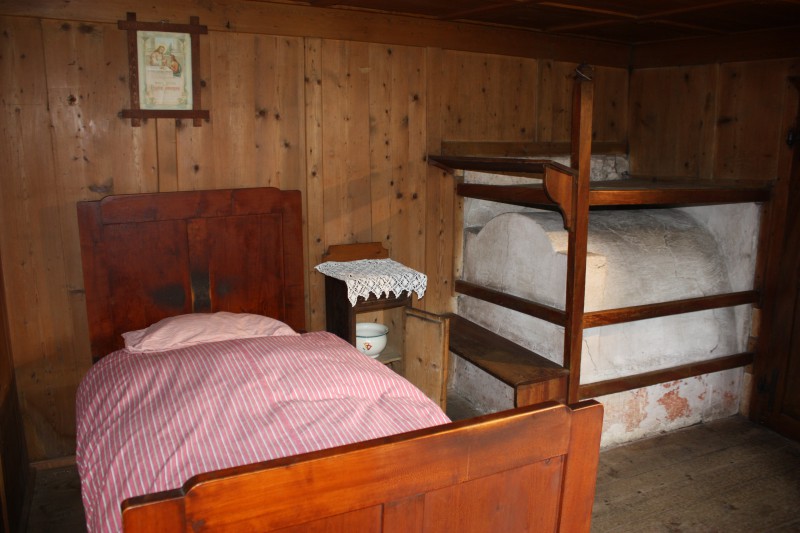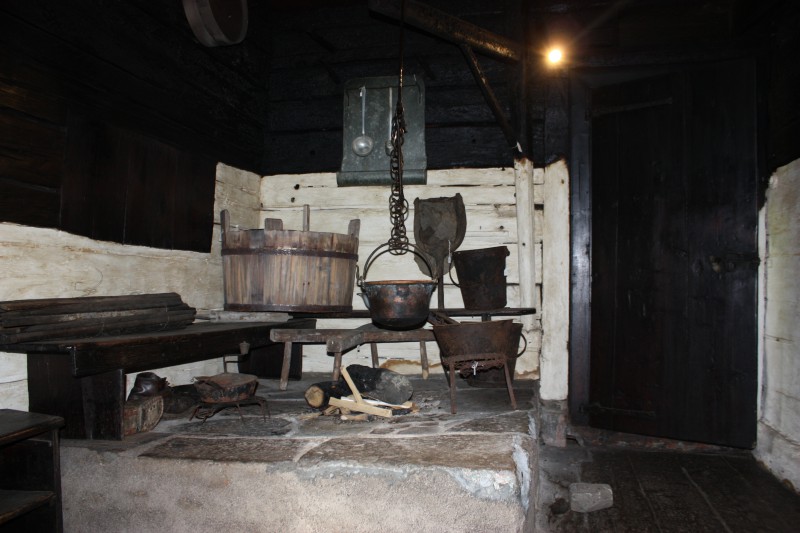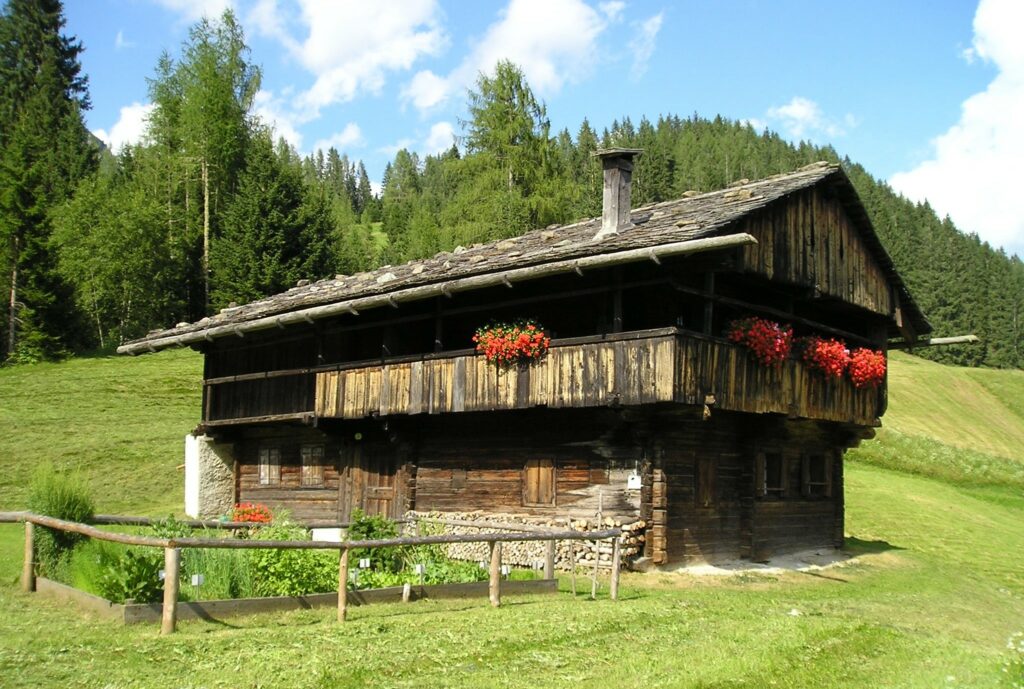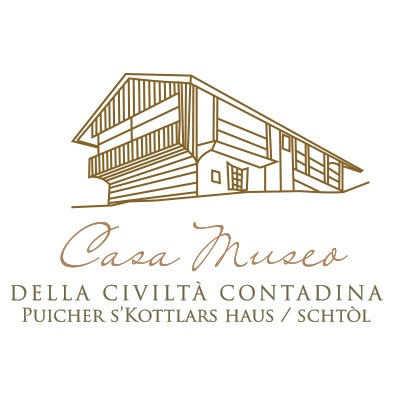
The Museum Network: culture and territory to be promoted and safeguarded.
The house, inhabited without substantial alterations in its structure until the 1980s, was bought by the Municipality of Sappada in 1995 and restored in full respect of the principles of conservative and philological restoration and is used as a Rural Life House-Museum. Here, on completing the visit to the Museum of Ethnography, visitors will have taken a leap back in time and directly experienced the places, domestic habits and lifestyle of the families of Sappada.
The Puicher s’Kottlars house complex is an interesting example of a simple form of house with attached barn and hay-loft, attributable to the second quarter of the nineteenth century. Having entered the hall (labe), which according to the traditional system crosses the building from east to west, on the first floor is the kitchen (kuchl), blackened by the smoke of the open hearth (heart or offns vair) that fumigated food hanging in the smoker (eisn) on the ceiling.
A totally different atmosphere reigns in the dining room (kòschtibe), where the wooden wainscoting held in the heat of the vaulted masonry stove (kòchlouvn) located in the corner and fed through a special opening in the corridor (ouvnloch). After visiting the bedroom (kommer) on the ground floor, the second floor is reached via the steep stairs in the hall. Here is a second bedroom and a small room (kemmerle) used as a little workshop for manual tasks where visitors can see many wooden tools. The gallery (pirl) runs on three sides of the second floor and, on the eastern side, hosts the small long-drop toilet (gònk).
The roof retains the original roof shingles made of larch. Unlike most homes in Sappada, here the stables (schtòl) are merged into the building on the ground floor, not as a separate building near the house. Upstairs, at the back is the hay-loft (dille) in which was stored hay for the long winter.
Next to the house, in a garden (gòrte) the vegetables and cereals cultivated are those which would have been grown in the past in the valley. Next to the potatoes (eapfl), which are harvested in autumn, there are cabbages (kobaskepfe) used to prepare the sauerkraut, beans (“poan”), peas (orbasn) and different types of turnips yellow radishes (ravaneis), red (roata ruibm) and white turnips for livestock (vihronkle). The tuft of horseradish (krean) stands over chives (schnittlaat), onions (zbival), garlic (knouval), carrots (moarn), chard (piessl) and landcress (kresse), which was eaten together with salad (solat).
Among the cereals, once cultivated across entire fields, you can recognize the ears of barley (gèrschte) with which they prepared soups, rye (rokke) that reaches maturity only if sown in autumn and oats (hober) fed to horses. The blue flowers of flax (hoor) swaying in the summer along with other flowers such as marigolds recall the large plots of land close to the town devoted to them. The linen was processed into a fabric at home to create clothes and bed-linen. In the garden there are the medicinal and aromatic herbs (kraiter), such as mint (minzn), mallow (malva), chamomile (komildn), wormwood (bermant) and tarragon (pèrschtròmm) with which the sour cottage cheese (saurnschotte) was seasoned. A varied mix, to which, each year new plants are added with the help of the people of Sappada.
Summer opening (June – September)
Guided tours
Open on request only for groups in May and June – September and October
Closed from November to May
For detailed opening hours and other information please visit http://www.plodn.info/
Free offer
For views of users with specific needs, please contact the facility.
Building not accessible to the disabled
– Building accessible via a footpath
– No bathroom

